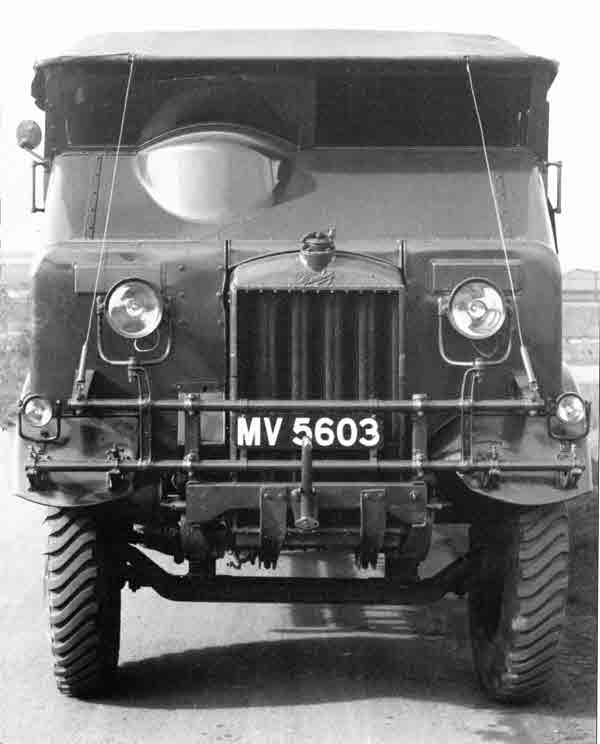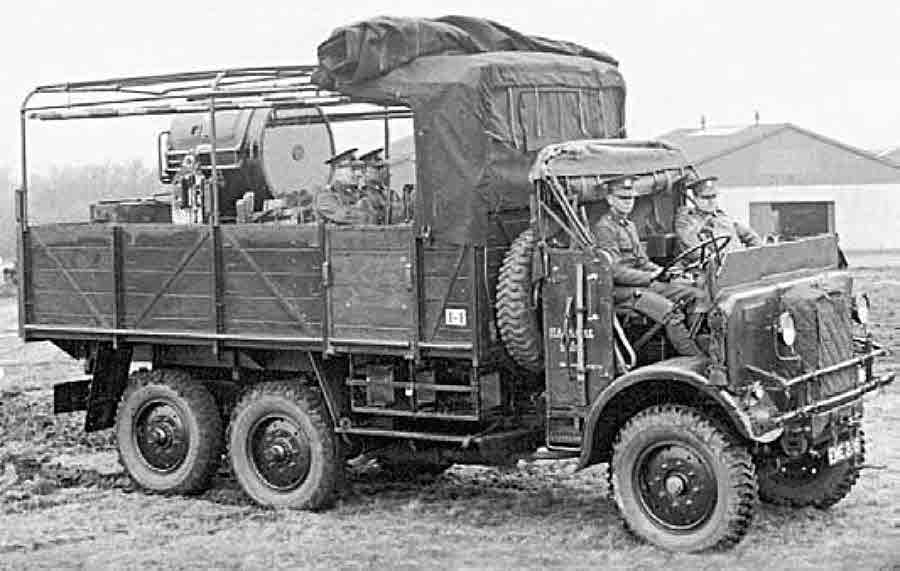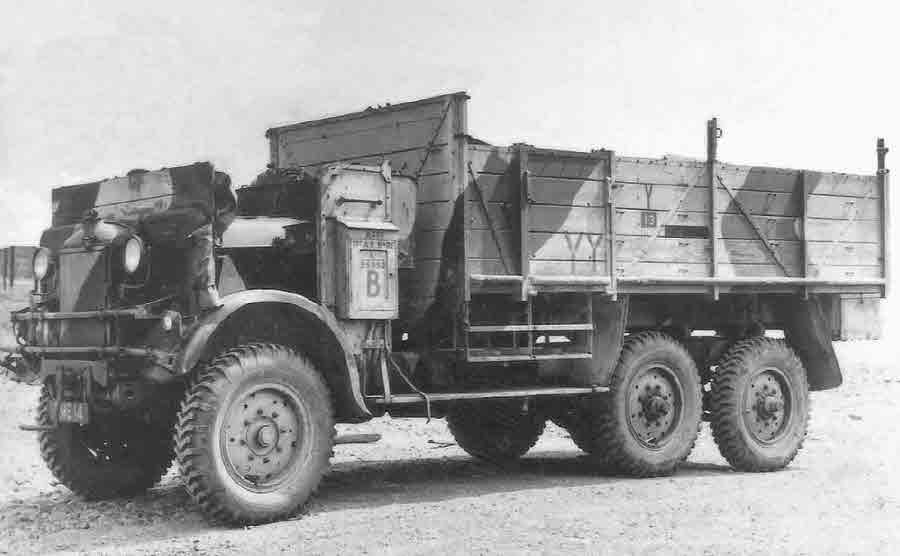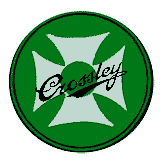The Crossley IGL3 was a heavier development of the IGL2 initially for use in India and first appeared in 1928. The chassis was rated as 4 tons on road and 3 tons over rough ground. The last ones were made in 1941. It was built in both normal control and forward control versions and the main customers were the Royal Air Force, the British Army and the Indian Army. The RAF only purchased the normal control version and these were designated IGL3. The British Army had both normal and forward control versions designated IGL4 to 8 with the majority being IGL8s. By 1935 they all seem to have been IGL8s. The differences between the variants is not clear except for the IGL5 which was a one-off experimental version fitted with a 45/85 Diesel engine but later converted to petrol.
At least one forward control chassis was fitted with a Kegresse tracked bogie.
A large number of IGL8s were taken to France by the British Expeditionary Force in 1939-40 and were abandoned following the Dunkirk evacuation. Many were recovered and used by the German armed forces and numerous photographs exist of them with their new owners.
Some vehicles were sold onto the civilian market including an order for fire tenders for Madrid.
The 5.3-litre 30/70 or 30/100 petrol engines were normally fitted.
Chassis numbers were in either the 31-35xxx range.
BODY STYLES

The prototype IGL3 Series 1 shown to the press in December 1928. The early versions did not have brakes on the front axle.

An IGL3 in RAF service. The Gruss air springs were fitted to the front suspension on all orders after October 1936 and possibly to some earlier vehicles.

From 1933 this is an army IGL6 with forward control and offset radiator. MV is a Middlesex registration - these were used by military vehicles in the 1930s.
Photo - Imperial War Museum collection.

This is an army IGL8 from 1936 carrying a searchlight. The body is by Charles Roberts of Wakefield. It has the standard War Department design of open cab with canvas folding roof.
Photo - Imperial War Museum collection.

Also probably from 1936, this army IGL8 looks to have the same Charles Roberts body as the searchlight application but in this case in use as a General Service vehicle. The cab canvas roof looks to have been completely removed.

One of the 50 IGL3s supplied to the RAF in 1937 as fire tenders. They were fitted with the up-rated 30/100 engines. The body was built by Brush Electrical Engineering and was painted bright red.
SPECIFICATION
| Engine/gearbox/transmission | |
|---|---|
| capacity | 5266 cc |
| cylinders | four cast in pairs |
| bore | 4 5/16 inches (109.5 mm) |
| stroke | 5 1/2 inches (139.7mm) |
| compression ratio | 6:1 |
| RAC horsepower | 29.7 |
| valves | side |
| lubrication | Dry sump. Oil pressure fed to bearings |
| ignition | Simms SR4 magneto (coil optional) |
| carburettor | Zenith vertical |
| max power | 30/70 - 70 bhp 30/100 - 90 bhp |
| fuel consumption (typical) | |
| max speed (approx) | |
| Gears | 4 + 2 speed. Ratios: 5.448, 3.291, 1.883, 1:1. Reverse 4.4:1 Auxiliary gearbox reduction ratio 3.18:1 |
| Final Drive | Worm on each rear axle. Ratio 7.25:1 |
| Clutch | single dry-plate |
| Axle | Front - beam axle Rear - twin axle bogie |
| Body/chassis | |
|---|---|
| wheelbase | 12 feet 0 in (3.65m) 12 feet 6 in (3.81m) 13 feet 0 in (3.96m) 14 feet 4 in (4.06m) or other "as required". |
| length | |
| track | 62 in (1550mm) |
| height | |
| weight (unladen) | 9 ton 4 cwt (9.35 tonne) approx. |
| steering | worm and full-wheel or Marles cam and roller |
| suspension - front | semi-elliptic springs underslung |
| suspension - rear | War Department four-wheel bogie. |
| brakes | Internal expanding drum on 4-rear wheels. Front-wheel brakes
optional. |
| wheels/tyres | 34 x 7 or 40 x 9 |
| fuel capacity | Varies according to specification. Typical:- Fire tender - 15 gallons under driver's seat Balloon winch - 26 gallons |
| Lighting | |
